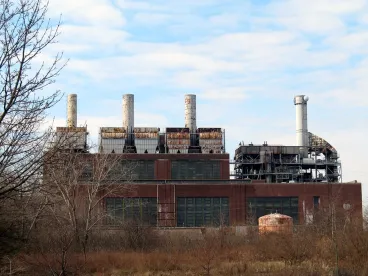Welcome to 2020! As always, we at the Manufacturing Law Blog are starting the year with our annual forecasts of hot topics. We start the series with our Environmental, Health & Safety outlook:
PFAS
We highlighted per- and polyfluoroalkyl substances, or PFAS, as a hot topic in last year’s 2019 outlook post, saying, “If you haven’t yet heard of PFAS, you will.” This year, we think it is safe to say you’ve probably heard of them. PFAS are getting a lot of attention everywhere you look, state regulations, federal plans, court rooms, around the deal table, and even on the silver screen. PFAS manufacturing facilities may have been the first targets, but landfills and other potential release sites are gaining attention from regulators and plaintiffs alike. States are moving quickly to adopt regulations, or at the very least request information from parties that do or may have had a connection to PFAS compounds.
With all of this attention, there has been a growing effort to sample water supplies to evaluate potential exposure issues. These efforts are sure to turn up additional PFAS contamination areas, particularly given the lengthy and prolific use of these compounds. As we identify more and more areas of contamination, the network of potentially responsible parties could expand beyond PFAS manufacturers to landfill operators, property owners, and PFAS users and suppliers, among others.
EPA developed and released its PFAS Action Plan in February 2019, but the process to change federal regulations and standards is, well, slow. Congress is trying to speed up the action, with House bill H.R. 535 requiring time frames for a number of regulatory and other actions under the Comprehensive Environmental Response, Compensation, and Liability Act, Safe Drinking Water Act, and the Toxic Substances Control Act. The Senate and White House vow a fight, but, in 2020, it’s safe to say everyone is getting in on the PFAS action.
OSHA Inspection Weighting
In late 2019, OSHA developed new standards for how it prioritizes inspections. Previously, OSHA focused on the length of time an inspection would take and the number of inspections performed. Under the new Enforcement Weighting System, OSHA is prioritizing inspections based on a number of factors with a goal towards targeting higher risk activities and establishments. OSHA plans to prioritize inspections in a weighted fashion in the order listed below:
Group A: Criminal and significant cases
Group B:
-
Fatalities and catastrophes;
-
Chemical plan national enforcement priority and process safety management covered inspections
Group C:
-
Caught-in hazards, such as trenching, equipment operations, oil & gas
-
Electrical hazards, such as overhead power lines, electrical wiring methods
-
Fall hazards, such as scaffolds, elevated walking working surfaces
-
Struck-by hazards, such as highway work zones, landscaping, material handling
Group D:
-
Programmed inspections following an established priority hazards that are time insensitive and a high priority, such as:
-
Amputation
-
Combustible dust
-
Ergonomics
-
Federal agency inspections
-
Heat hazards
-
Non-permissible exposure limit overexposures
-
Workplace violence hazards
-
Confined space hazards
-
Personal sampling
-
Site specific targeting
-
Group E: all other inspections
This weighting system provides good insight into the types of hazards that might attract OSHA’s attention in 2020.
EPA Focus on Air and Water
EPA sets National Compliance Initiatives (“NCIs”, formerly known as National Enforcement Initiatives) for multi-year periods to focus its compliance and enforcement resources. The newly established NCIs focus on EPA’s bread and butter—air and water. For FY 2020-2023, EPA plans to focus on reducing air emissions of hazardous air pollutants and volatile organic compounds, particularly when those emissions would contribute to non-attainment with National Ambient Air Quality Standards or would adversely affect vulnerable populations. EPA also plans to reduce significant noncompliance with the Clean Water Act permit program. EPA has identified approximately 11,000 permittees with effluent violations that are in significantly noncompliant. EPA plans to cut the incidence of significant noncompliance in half by the end of FY 2022.



 />i
/>i

